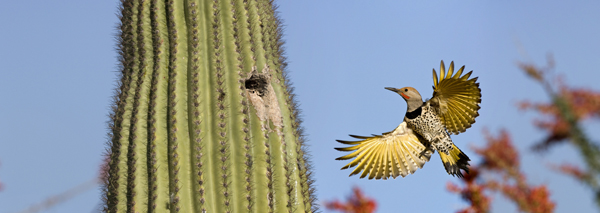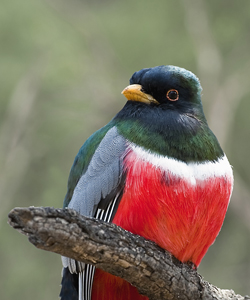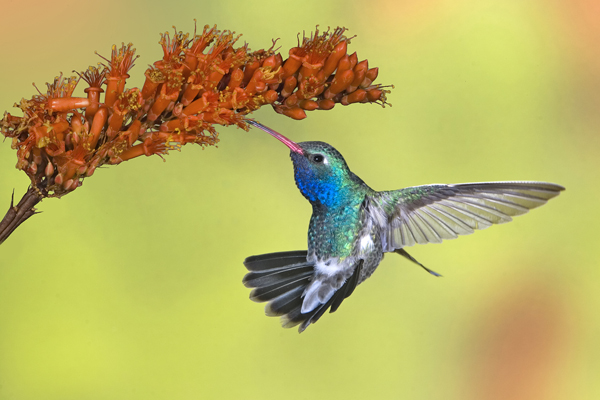Experience Desert Birding & Wildlife

Gilded Filcker
photo: Bruce Taubert/courtesy Tucson Audubon Society
Tucson’s urbanites encounter wildlife on a regular basis. Our neighborhoods resound with bird songs 12 months of the year. Lizards, snakes, coyotes roam far and wide. I see rabbits on every walk in my mid-town ‘hood. Having lived in Tucson for over twenty years, I recognize that the Sonoran Desert’s boundary between town and the desert is only real to humans, not to the desert’s wild denizens. Birds routinely bring the viewer and listener to wonderment and connect us back, and into, this robust environment.
As stated by Dr. Paul Green of the Tucson Audubon Society via email: “Birds are the start of an exciting relationship with nature, one where we can all learn about and enjoy wildlife and wild spaces, make our own neighborhoods better for birds and wildlife, and conserve and restore the most important areas for birds and for people, as we coexist more sustainably.”
Starting August 13 and continuing through August 17, the Tucson Audubon Society brings the amazing birds of the Sonoran Desert and Sky Islands to the public with its Fourth Annual Tucson Bird and Wildlife Festival. The Tucson Audubon Society was founded in 1949, with a mission statement that promises to “promote the protection and stewardship of southern Arizona’s biological diversity through the study and enjoyment of birds and the places they live.”
This year’s event anticipates the continued increase in popularity which has occurred since the festival’s start in 2011. The event is far flung, but conveniently centered at the RiverPark Inn, 350 South Freeway, just west of I-10 and very near downtown, where attendees can take in safe and fun live animal and bird encounters, educational exhibits, lectures and talks, meet with various nature advocacy groups, and peruse items for sale by nature-related vendors.
Workshops that run Thursday, August 14 through Sunday, August 17, will teach beginning birders and new visitors to the Sonoran Desert region how to identify some bird species, understand bird molting, identify bats with sonar detectors, and learn the basics of gardening with an eye to attracting hummingbirds to one’s backyard. This year, with the advent of the new Sun Link streetcar line, an extremely convenient mass transit access exists near the RiverPark Inn.

Elegant Trogon
Photo: Donna Tolbert-Anderson, courtesy Tucson Audubon Society
Dr. Green explains the reason for the Society’s creation and continued stewardship of the event: “Tucson Audubon started the Tucson Bird & Wildlife Festival for two reasons. First we sought to create a local tool to convince those in government and business that traveling birdwatchers have significant economic impact and that the natural habitats upon which those birds depend have value in an undeveloped state. We already know that wildlife watching is worth $1.2 billion each year to our state. Secondly, we sought to celebrate the astounding diversity of birds here. Of the 914 species of birds found in North America, around 525 have been seen in Arizona, 400 species seen in our region each year, 36 not regularly found elsewhere in U.S. and around 40 are found only in the U.S./Mexico border area. So this is a very special part of the continent. The festival brings birders from across the country, and a number of overseas countries. We teach people about the threats to our birds and the places they live, and tell people what they can do to protect and enhance our region for wildlife.”
Special guests to the event include Robert Mesta, who will discuss recovery efforts related to species survival of four high-profile endangered birds: the California Condor, Bald Eagle, Peregrine Falcon and Masked Bobwhite Quail, all with unique ties to the American Southwest. Also, author and international bird tour leader Steven N. G. Howell, author of “Rare Birds of North America,” and co-author of “A Guide to the Birds of Mexico and Northern Central America,” will speak on the topic: “Shift Happens: Rare (Vagrant) Birds in North America – Why, Where, and Whence?”
Away from the RiverPark Inn, and for an enhanced experience, there are scheduled trips to nearby birding hotspots.
Tucson Audubon Society Events and Volunteer Coordinator Julie Pulliam elucidates: “A few spaces remain on trips that highlight the stunning array of Sonoran Desert specialty birds at Catalina State Park and Saguaro National Park. If you like viewing life behind your camera lens, join our new ‘Bird & Wildlife Viewing & Photography Trip’ where you can photograph birds from the desert floor to the canyon habitat of the Santa Rita Mountains. When you think of birding in southeast Arizona, you may not think of shorebirds, but on a trip to Benson and Willcox, you can spot a wide variety of shorebirds as they stop over on their migration journey.”
Dozens of field trips (they do cost and must be reserved in advance) and workshops are scheduled with national experts.
Dr. Green stated: “If you live in Tucson, nowhere can you hear from so many local wildlife experts in one weekend as at the Tucson Bird & Wildlife Festival. They will open your eyes to the wildlife in your backyard.”
Of special interest to Tucsonans is a planned trip to the Campbell Avenue/Rillito Bridge, which is a bat roost extraordinaire. I have driven across that bridge just as the bats cut loose. In seconds, thousands of bats swirl into the indigo sunset sky, curling like a single entity. Remember, every mosquito eaten by a bat is one less to feed on you! Bat biologist Dr. Ronnie Sidner will be on hand for this reservation-only discussion of bat ecology and biology. Sonar detectors will be used to identify different bat species that may be encountered.
For newbies, there will be a beginning birding workshop with birder guide Lynn Hassler scheduled for August 16 at 10 a.m. and starting at the RiverPark Inn. Here’s hoping that an inspired reader can get one of these reserved slots!

Broad-Billed Hummingbird (male), Santa Rita Lodge, Madera Canyon.
photo: Alan D. Wilson/courtesy Tucson Audubon Society
On the more challenging end of the spectrum, Tucson Audubon Society will present, on August 13, beginning at midnight sharp, and continuing for 24 hours, the Sky Islands Birding Cup, during which extreme birder teams will compete for the Sky Islands Birding Cup. This twenty-four competition between two person teams sounds crazy!
According to Kara Kaczmarzyk, Development & Membership Manager for the local Society: “At this time of year, you could see more than 200 bird species in 24 hours, so planning your route and knowing the hotspots is how teams like last year’s winners ‘Burning the Midnight Oil’ found 185 species in one day. The race is on for the 200: which team can break the record and find 200 birds in 24 hours? During the Sky Islands Birding Cup, teams compete to see how many species they can spot in a day, while raising funds and awareness for bird habitat conservation.”
If you can’t get up at midnight on August 13 and search for birds over the next 24 hours, celebrate with the winners at the RiverPark Inn on August 14. All in the all, the event promises to provide exciting knowledge about our natural world to both the casual attendee and the committed learner.
Learn more and register for the Fourth Annual Bird and Wildlife Festival at TucsonAudubon.org/festival.
Category: Community, RECREATION




